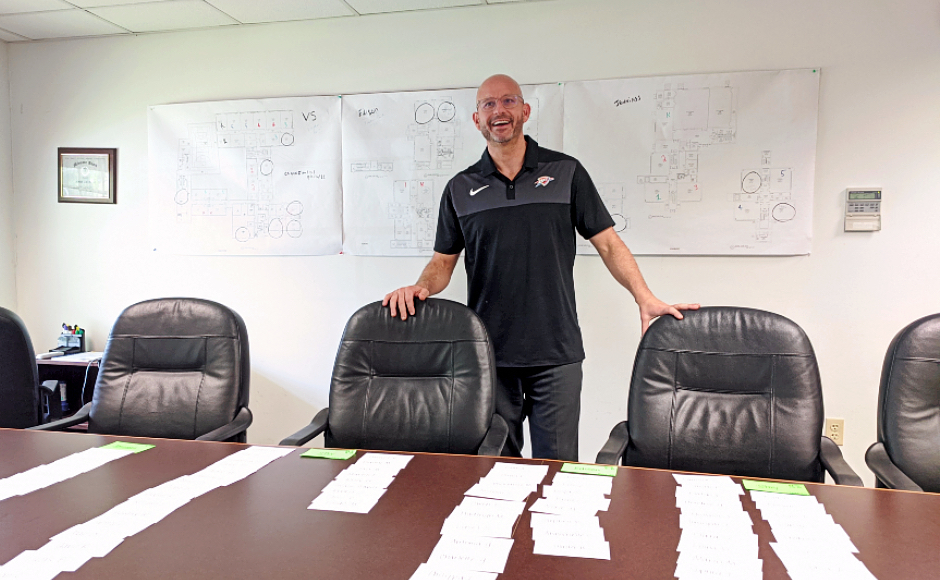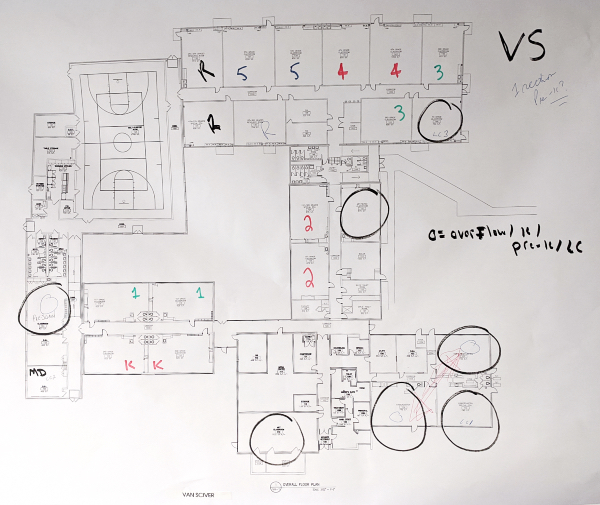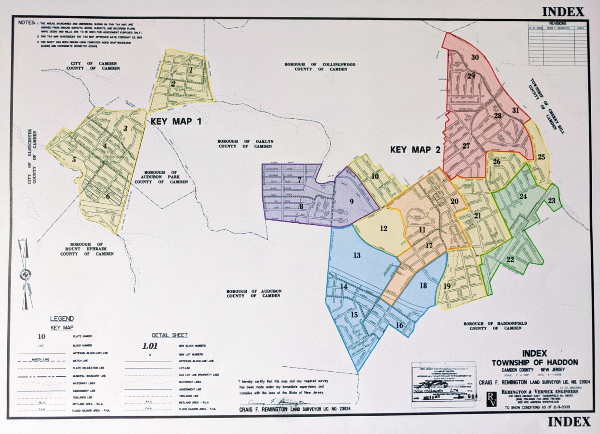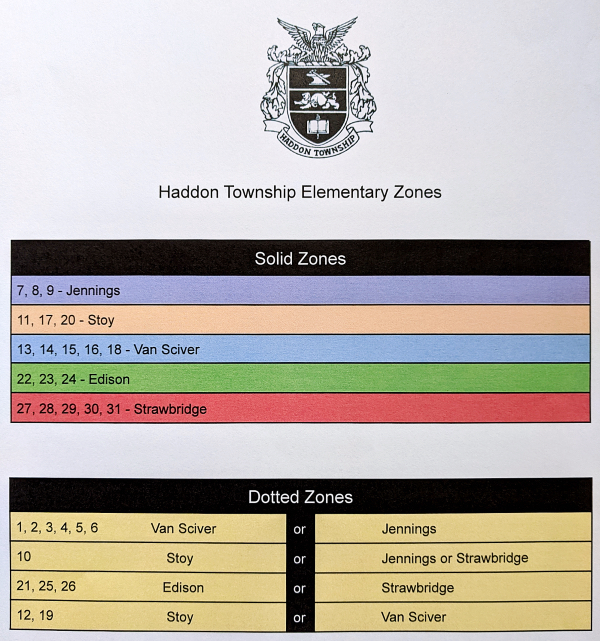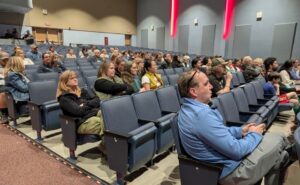Superintendent Robert Fisicaro says incoming kindergarten students may attend different elementary schools throughout the township to help normalize class sizes in a district that continues to lose enrollment.
By Matt Skoufalos | June 22, 2021
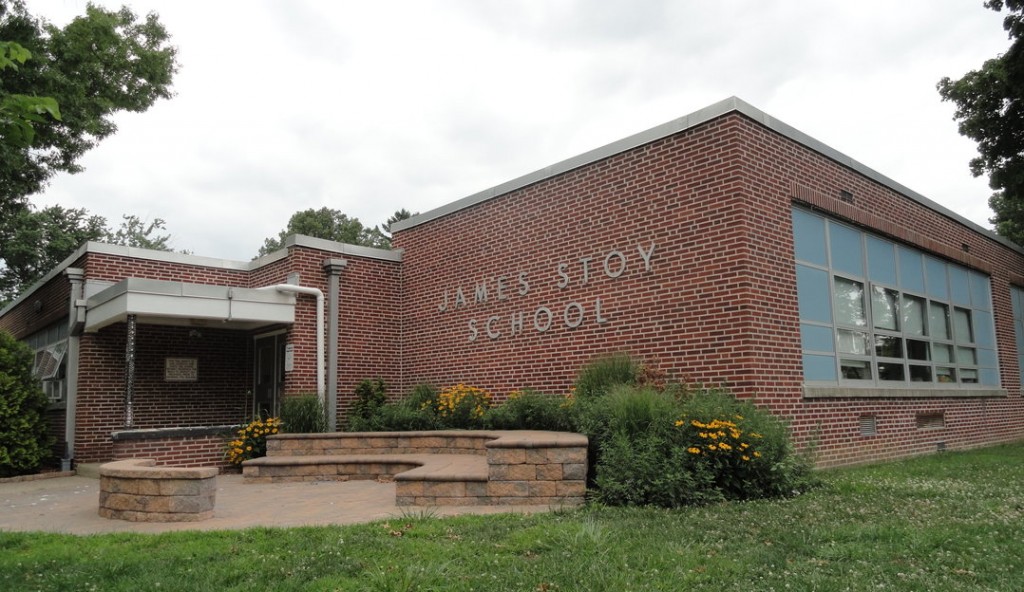
James Stoy School, built in 1928, is one of the oldest buildings in the Haddon Township school district. Credit: Matt Skoufalos.
In late June, school is probably the last thing on any school-aged student’s mind.
At the Haddon Township Board of Education, however, the summer months offer a few weeks for staff to determine at which of the five elementary schools in the district next year’s children will attend.
Historically, classes in Haddon Township have been organized around its neighborhood elementary schools—Thomas Edison, Clyde S. Jennings, James Stoy, Strawbridge, and Van Sciver—with students taking classes at the buildings closest to their homes.
However, disproportionate population growth in some areas of the township and a drop-off in student enrollment (the district currently educates just 1,996 kids) has contributed to wildly varying class sizes across those buildings.
For example, Stoy Elementary has an incoming third-grade class of 26 students, and a fourth-grade class of 25. A mile-and-a-quarter away, there are just 11 incoming second-graders at Clyde S. Jennings Elementary.
To Haddon Township Superintendent of Schools Robert Fisicaro, that’s unacceptable.
“The neighborhood [elementary school] concept works perfectly if everyone in these neighborhoods is having babies in proportion,” Fisicaro said. Since they haven’t, it’s led to “imbalanced class sizes among the five elementary schools, and inefficiencies in the way we staff the district,” he said.
From an administrative perspective, it makes more sense to combine that first-grade class of 11 students at Jennings with another first-grade class of 15 at Van Sciver, and create a single class of 26, recouping the cost of another instructor while freeing up classroom space, the superintendent said.
“If we’re telling these Stoy families that 26 [students] is okay in a class, then as a taxpayer, why wouldn’t I combine this 15 and this 11 to make a 26, save a teacher’s salary, and invest that money elsewhere in the district?” Fisicaro said.
However, when the Haddon Township Board of Education explored the question of district-wide, grade-level realignment—that is, reorganizing neighborhood elementary schools to group all students in a given grade within a single building, instead of each of school teaching all five grades—it was met with pushback from parents.
But after years of flat aid from the state Department of Education, paying for extra teachers in each building without an increase in enrollment (each student brings in $12,000 in tuition from the state) doesn’t make financial sense.
The district is so under-enrolled that it “could easily accommodate another 100 students without having to add a desk,” Fisicaro said.
“That’s a problem because we’re funded on a per-pupil basis,” he said.
Despite a red-hot real estate market and some growth in the neighborhoods served by Edison Elementary School, “we’re just not seeing a spike in the number of students coming in and registering,” he said.
Haddon Township also lost 48 students to private schools last August; some were home-schooled, but others transferred to area Catholic schools St. Rose of Lima, Christ the King, and Paul VI. The district, which approved a $39-million bond referendum to improve its buildings only seven years ago, had even contemplated closing one of its elementary schools due to the decreased enrollment, Fisicaro said.
Thanks to flat state aid—instead of anticipated cuts—and another round of funds from the Elementary and Secondary School Emergency Relief (ESSER) supplemental aid, courtesy of the federal Coronavirus Response and Relief Supplemental Appropriations Act of 2021 (CRRSA Act) Haddon Township has been given a “gift of time” to resolve these issues, Fisicaro said.
Those will add about $1.5 million to the district’s coffers over the next few years, which also buys Haddon Township the opportunity to hammer out its elementary class sizes.
“We can’t stay the same, because if we stay the same, in three years, we’re going to be exactly where we are,” Fisicaro said. “And it’s foolish to go through with grade-level schools next year because financially, we don’t have to, and there’s some community resistance to it.”
In the meantime—and after having explored parents’ concerns with 60 to 80 residents in focus groups—the school district is moving forward with a compromise solution that Fisicaro describes as “elementary zones.”
By carving up the township into “solid zones,” those streets closest to an elementary school, and “dotted zones,” intermediate blocks located equidistantly between more than one school, Fisicaro hopes to be able to provide balanced class sizes at each, while also freeing up classrooms for other purposes.
For example: zones one through six, which are located in the West Collingswood Heights and the West Collingwood Extension neighborhoods of Haddon Township, will send their students to Van Sciver or Jennings. Students in zones 21, 25, and 26 could go either to Edison or Strawbridge. Other consideration will be given to help families with multiple schoolchildren from spreading their students across various buildings in the district.
The zone methodology will be implemented in September for incoming kindergarten students in the district, Fisicaro said. If it’s successful, the program will be ramped up in the subsequent years, until each class settles around 20 students apiece.
“We’re trying to thread the needle on this to serve the community and serve the kids,” the superintendent said. “I don’t think people care so much about which school they go to; I think they value the continuity of service from K to 5.”
In a school district that offers neither a full-day kindergarten nor pre-K program, rebalancing class sizes can also free up the resources and physical space for Haddon Township to begin considering either or both. In New Jersey, funding for full-day pre-K is not offered to districts that do not offer a full-day kindergarten program, which would itself cost $400,000 to implement, Fisicaro said.
“Right now it’s looking pretty good to maintain the neighborhood schools if we can pull this off,” he said. “This plan has the strongest chance to succeed because everyone has skin in the game.”
After a two-year trial period, Fisicaro said the district would reconvene its focus groups and see whether the zoning plan resolves the issues on the table.
He’s still not ready to rule out a district-wide grade-level alignment if it doesn’t.
“We have to have balanced class sizes,” Fisicaro said.
“We have to be ready to implement full-day kindergarten.
“We have to be able to maximize the efficiencies of our staff,” he said.
“And we have to be pleased with the overall delivery of educational services for every single kid.”
Grade-level-aligned elementary schools would decrease district staffing costs but increase transportation costs, although “we’d still come out mildly better financially,” Fisicaro said.
And despite the notion that instructional grouping and staff collaboration would improve with grade-level schools, the superintendent said many of those advantages could be leveraged by leaning on the same technologies districts used to manage instruction and professional development during the novel coronavirus (COVID-19) pandemic.
But if the district does move to shift its elementary-school layouts, Fisicaro said he could see turning either of the one-story Stoy or Van Sciver schools into a dedicated pre-K and kindergarten building, and possibly shifting the others to instructing grades one through five along a neighborhood model.
Regardless of feedback from parents, the superintendent said he believes district staff and teachers will support either educational model, as long as the administration is behind it.
“When you have plans out there, and emotions running all over the map, it creates some anxiety amongst everybody,” Fisicaro said. “I think Haddon Township folks are professionals and they’ll respond professionally, but there’s got to be clarity and direction.”

